The throttle body is a crucial component of your vehicle’s engine, regulating airflow and maintaining smooth acceleration. When this vital part malfunctions, it can lead to a host of frustrating symptoms that impact your driving experience and potentially even your safety. Whether you’re an automotive enthusiast or want to stay informed about your car’s health, understanding the Top 10 Symptoms Of A Bad Throttle Body is essential knowledge.
Imagine cruising down the highway, only to suddenly feel a loss of power and responsiveness from your vehicle. Or perhaps you’ve noticed erratic idling or stalling at stoplights, leaving you feeling uneasy about the reliability of your car. These are some warning signs that could indicate a failing throttle body.
Top 10 Symptoms Of A Bad Throttle Body
Common indicators of a defective or malfunctioning throttle body include abrupt acceleration, the illumination of the check engine light, engine misfires, and engine stalling. Additional signs may include fluctuations in idle speed and altered fuel consumption. A detailed list is provided below to understand each symptom further.
1. RPM High Idle
RPM High Idle can be a frustrating issue that car owners often encounter, but the cause is not always easy to pin down. One of the common culprits behind high idle RPM is a wrong throttle body. A faulty throttle body can disrupt the airflow into the engine, causing erratic RPM levels and potentially leading to a high idle situation. Recognizing the symptoms of a wrong throttle body effectively addresses this issue.
1. Unstable Idling: A malfunctioning throttle body may lead to irregular idling, causing fluctuations in RPM even when the vehicle is stationary.
2. Poor Acceleration: A wrong throttle body can hinder smooth acceleration by disrupting air intake into the engine, resulting in sluggish performance.
3. Engine Stalling: When the throttle body fails, it can lead to sudden engine stalling, posing safety hazards, especially during driving.
These are just a few symptoms that may indicate an issue with your vehicle’s throttle body. Identifying these signs early on and seeking professional assistance can prevent further damage to your car and ensure optimal performance on the road.

2. Misfires
Misfires in a vehicle can be frustrating and costly, often causing hesitation, loss of power, and decreased fuel efficiency. One common culprit of misfires is a wrong throttle body, which can lead to various symptoms that are crucial to recognize for timely maintenance.
Some signs of a wrong throttle body include rough idling, stalling at low speeds, and an illuminated check engine light. Difficulty starting the car, reduced acceleration, and unusual noises during operation could all point toward issues with the throttle body.
Understanding these symptoms is vital for addressing problems early on and preventing further damage to the vehicle. By being aware of the potential signs of a wrong throttle body, drivers can take proactive measures to maintain their cars’ performance and safety while avoiding unnecessary repairs or breakdowns on the road.
Staying attentive to these telltale symptoms can help ensure a smooth driving experience and prolong the lifespan of your vehicle’s engine.
3. Engine Check Light
The engine check light is a notorious source of anxiety for car owners, often appearing without warning and leaving them to wonder about the severity of the issue at hand. While this pesky indicator has many potential causes, one common culprit is a malfunctioning throttle body.
The throttle body plays a crucial role in regulating the airflow and fuel mixture into the engine, and when it malfunctions, it can trigger the engine check light to illuminate.

So, what symptoms of a wrong throttle body might trigger the engine check light? One key sign is erratic idling or stalling when stopping, which indicates an imbalance in the air-to-fuel ratio. Difficulty starting the car or hesitation during acceleration can indicate throttle body issues.
If left unchecked, these symptoms can lead to decreased fuel efficiency and potential long-term damage to your vehicle’s engine. Understanding these signs can help car owners diagnose problems early and prevent more severe issues down the road.
4. A Rough Idle
A rough idle can be frustrating for any car owner. It’s that unsettling sensation when your vehicle shudders and vibrates unevenly at a stop. This symptom often indicates a problem with the throttle body, an essential component of the engine control system.
Understanding this connection is crucial because a lousy throttle body can lead to various other issues within your vehicle. One key indicator of a faulty throttle body is erratic idling, which can manifest in different ways: fluctuating RPMs, stalling at idle, or struggling to maintain a consistent engine speed.
This inconsistency is an annoyance and affects overall performance and fuel efficiency. It’s essential to address these symptoms promptly as they could signal potential throttle body complications that require immediate attention.
5. Unsteady Acceleration
Unsteady acceleration can be a frustrating and potentially dangerous issue for vehicle owners. It often manifests as jerky or hesitant movements when picking up speed, leading to a lack of control and confidence behind the wheel.
While there can be various reasons for this problem, one common culprit is a malfunctioning throttle body. The throttle body plays a crucial role in regulating the airflow into the engine, and when it becomes faulty, it can result in unpredictable acceleration patterns.

Recognizing the symptoms of a wrong throttle body is essential in addressing unsteady acceleration. Some common signs include rough idling, stalling at low speeds or when coming to a stop, decreased fuel efficiency, and even the illumination of the check engine light.
These indicators serve as valuable warnings that should prompt immediate action to diagnose and rectify any issues with the throttle body. By taking proactive measures to address these symptoms, drivers can regain control over their vehicle’s acceleration and ensure a safer driving experience for themselves and others on the road.
6. Gasoline Consumption Has Changed
Gasoline consumption has undergone a significant transformation in recent years, with the emergence of electric and hybrid vehicles challenging the traditional reliance on fossil fuels. This shift has been fueled by growing awareness of environmental issues and advancements in technology that have made alternative fuel options more practical and accessible.
Changing consumer preferences and government regulations have also played a role in altering the landscape of gasoline consumption.
As electric vehicles become more prevalent on the roads, there is an increasing emphasis on efficiency and reducing dependence on gasoline. This has led to innovations in engine design, including turbocharging and direct injection, which aim to improve fuel economy without sacrificing performance.
Introducing smart car technologies and advanced driving assistance systems has helped optimize gasoline usage by promoting smoother driving habits and proactive vehicle maintenance.
In light of these developments, it’s clear that the way we consume gasoline is undergoing a revolutionary change. The transition towards alternative energy sources reflects a desire for sustainability and signifies a significant shift in how we perceive transportation and its environmental impact.
As electric vehicles continue to gain traction in the market, it will be crucial for consumers to stay informed about evolving fuel economy standards and emerging technologies that shape our relationship with gasoline consumption.
7. Engine Performance Issues
Engine performance issues can be a frustrating experience for any vehicle owner. One common culprit of poor engine performance is a wrong throttle body. Recognizing the symptoms of a malfunctioning throttle body can save you time and money in the long run.
Here are ten signs to watch for reduced engine power, stalling or rough idle, hesitation or jerking during acceleration, and even the illuminated check engine light, which could indicate a failing throttle body.
- If your vehicle experiences poor fuel economy, irregular shifting in automatic transmissions, or an unresponsive accelerator pedal, it might be time to inspect your throttle body.
- Ignoring these symptoms may result in permanent damage to your engine and costly repairs.
- Understanding these warning signs allows you to address issues promptly and ensure that your vehicle’s engine operates at its best potential.
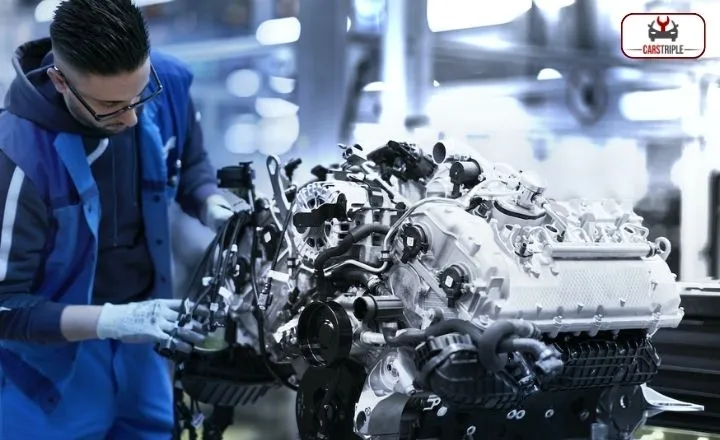
8. Standing Still
Standing still can often feel stagnant, but it doesn’t have to be. It can be an opportunity for introspection and reflection. By standing still and observing the world, we may uncover new insights that can shape our perspectives. This practice of standing still can offer a sense of clarity and direction that is often missed in the rush of everyday life.
In our fast-paced society, standing still has become almost revolutionary. It’s an act of rebellion against the constant busyness and chaos surrounding us. Standing still allows us to appreciate the slight details we overlook, leading to a greater sense of mindfulness and gratitude.
Embracing moments of standing still can lead to a deeper understanding of ourselves and the world around us, ultimately enhancing our overall well-being.
9. Excess Fuel Consumption
Excess fuel consumption can be frustrating for car owners, leading to increased costs and environmental concerns. When facing this problem, it’s essential to consider the potential causes. One common culprit is a wrong throttle body, which can result in inefficient air-fuel ratios and lead to higher fuel usage. Symptoms of a faulty throttle body include rough idling, stalling, and decreased engine performance.
A malfunctioning throttle body can trigger the check engine light to illuminate, indicating a need for immediate attention. Understanding these warning signs can empower car owners to address the underlying issue promptly and minimize excessive fuel consumption.
By recognizing the relationship between a wrong throttle body and fuel efficiency, drivers can take proactive steps to resolve this problem and reduce their environmental impact while saving money.
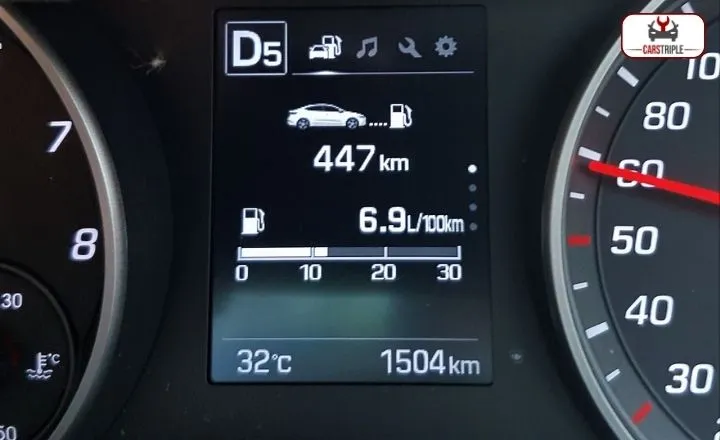
10. Very Slow Acceleration
Very slow acceleration is one of the most frustrating symptoms of a wrong throttle body. When the throttle body fails to open correctly, it restricts the air from getting into the engine, resulting in sluggish acceleration. This can be dangerous, especially when merging onto highways or navigating through traffic. It can lead to increased fuel consumption as the engine struggles to compensate for the lack of airflow.
In addition to poor acceleration, a faulty throttle body can cause rough idling and stalling at low speeds. This indicates a disruption in the air-fuel mixture entering the engine, leading to erratic performance. Drivers may also notice a delay in response when pressing on the gas pedal, creating potential safety hazards in critical driving situations.
Overall, recognizing these symptoms early and addressing them promptly is crucial for maintaining optimal vehicle performance and ensuring driver safety.
What Is A Throttle Body?
The throttle body plays a crucial role in the internal combustion engine, controlling the air entering the engine. It acts as a gatekeeper, regulating airflow and ensuring optimal fuel efficiency and performance. When this component malfunctions, it can lead to a host of issues that impact the overall functioning of the vehicle.
The symptom of a faulty throttle body is erratic idling or stalling. This occurs when the airflow is disrupted, leading to an imbalance in the air-fuel mixture. Drivers may experience unresponsive acceleration or a sudden loss of power, indicating that the throttle body is not functioning correctly.
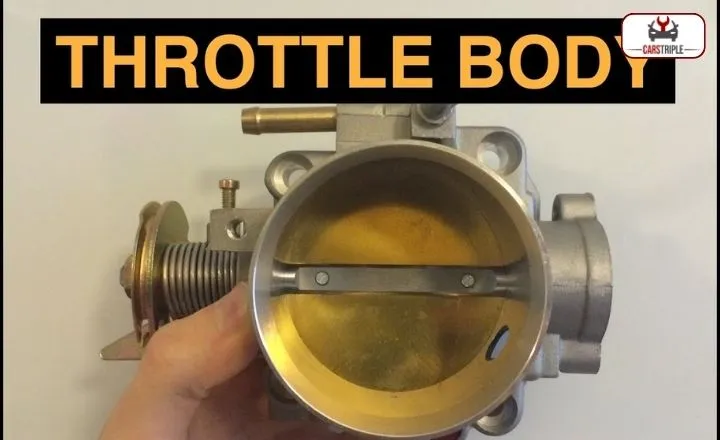
Cleaning The Throttle Body
If you’re experiencing rough idling, stalling, or decreased fuel efficiency in your vehicle, a dirty throttle body EGR valve could be the culprit. While it’s often overlooked during regular maintenance, cleaning this crucial component can significantly affect your car’s performance.
With proper attention and cleaning, carbon deposits and dirt can accumulate on the throttle body and EGR valve, leading to restricted airflow and efficient exhaust gas recirculation. This buildup can cause symptoms such as engine hesitation, poor acceleration, and even check engine lights.
Neglecting the cleanliness of your throttle body EGR valve can also result in a decrease in overall engine power and an increase in harmful emissions. A proactive approach to maintenance by regularly cleaning these components will improve overall engine performance and extend your vehicle’s life.
You can prevent costly repairs later by addressing these issues early on and using specialized cleaners or DIY methods to keep these parts free from grime and residue.
Please pay close attention to any signs of trouble, such as erratic idling or reduced throttle response, as they may point towards issues with the throttle body or EGR valve that need immediate attention.
Throttle Body Location
The throttle body plays a crucial role in regulating the air entering the engine, affecting its performance. Located between the air filter and the intake manifold, its position allows it to control the airflow into the machine. When connected to a vast hose from the turbocharger, it further influences how much air the engine provides at different speeds.
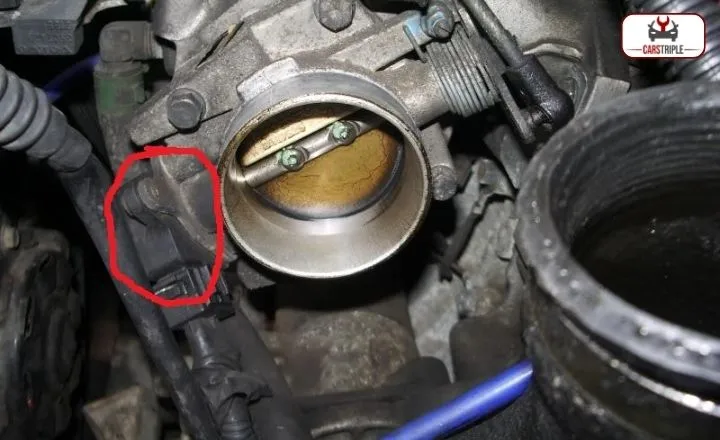
A lousy throttle body can lead to various symptoms that affect car performance. Among these are rough idling, stalling, and diminished fuel economy. Issues such as difficulty accelerating and a check engine light can also indicate problems with this vital component. Keeping an eye on these ten symptoms can help you detect throttle body issues early and avoid more severe damage to your vehicle’s performance.
Throttle Body Replacement Cost
The throttle body is a crucial engine component, regulating the airflow and fuel mixture to ensure efficient performance. Unfortunately, this part can wear out over time or become clogged with carbon deposits, leading to rough idling, stalling, and decreased fuel efficiency. Many vehicle owners may be concerned about the potential replacement cost when faced with symptoms of a wrong throttle body.
However, it’s essential to consider that while the labour costs for throttle body replacement typically fall within the $50 to $150 range, the total expense can vary based on several factors, such as the make and model of the vehicle and location.
When factoring in the cost of replacement parts — which averages between $250 to $650 — it becomes clear that addressing throttle body issues promptly is essential for optimal vehicle performance and avoiding more extensive and costly repairs down the line.
From erratic idling and engine stalling to sluggish acceleration and reduced power output, recognizing these warning signs early on can save both time and money by preventing further damage or complications. By staying proactive about maintenance and being aware of common symptoms associated with a faulty throttle body, drivers can take control of their vehicle’s longevity while managing costs more effectively.
Can I Replace The Throttle Body Myself?
Replacing the throttle body on a vehicle can be challenging, but it is feasible for those with some technical expertise and the right tools. Before starting the replacement process, it’s crucial to ensure that you have access to a diagnostic scanner, as calibrating the throttle body valve after installation is essential for proper functioning.
Disconnecting the battery and removing any components blocking access to the throttle body are necessary first steps. Loosening the clamps holding the air ducts in place allows for easy removal of old throttle bodies while following manufacturer guidelines, ensuring the correct installation of any new components.
When encountering symptoms such as rough idling, stalling, or difficulty accelerating, it’s essential to consider potential issues with the vehicle’s throttle body. A defective throttle body may also cause hesitation or surging during acceleration, leading to an overall decrease in engine performance.
Irregularities in vehicle speed or unexpected changes in RPM may indicate problems with this component’s functionality. By monitoring common symptoms of the wrong throttle body, including illuminated warning lights and poor fuel economy, drivers can address potential issues before severe damage occurs.
Does Cleaning The Throttle Body Make A Difference?
Cleaning the throttle body can make a significant difference in your vehicle’s performance. A dirty or clogged throttle body can cause several issues, including rough idling, stalling, and poor acceleration. Cleaning the throttle body can improve airflow and ensure fuel injectors function optimally, ultimately leading to smoother engine operation.
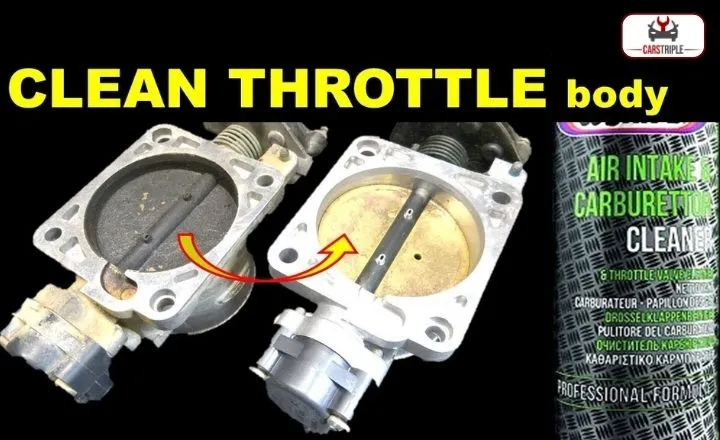
When the throttle body is dirty or clogged, it can adversely affect fuel economy and increase emissions. A malfunctioning throttle body can trigger the check engine light and cause hesitation when accelerating.
Through regular maintenance and cleaning of the throttle body, drivers can avoid costly repairs down the line while enjoying improved efficiency and performance from their vehicles.
Incorporating routine maintenance, such as cleaning the throttle body, is crucial for maintaining a healthy engine and maximizing vehicle longevity. Regular attention to cleaning the throttle body is an essential aspect of proper car care that can positively impact the overall driving experience.
Can You Drive With Throttle Body Problems?
Driving with throttle body problems can be risky, affecting the engine’s air intake and fuel delivery. This can result in poor acceleration, stalling, or even complete engine failure. Therefore, it’s essential to promptly address any throttle body issues to avoid potential safety hazards on the road.
A lousy throttle body can reduce fuel efficiency and increase emissions, impacting your wallet and the environment. Ignoring symptoms of a faulty throttle body, like rough idling or difficulty starting the car, could exacerbate the problem and lead to costly repairs.
Staying vigilant for signs of a wrong throttle body, such as erratic engine behaviour or unusual noises, is crucial. Being proactive about maintaining your vehicle’s components will ensure a safer driving experience and help extend your car’s lifespan.
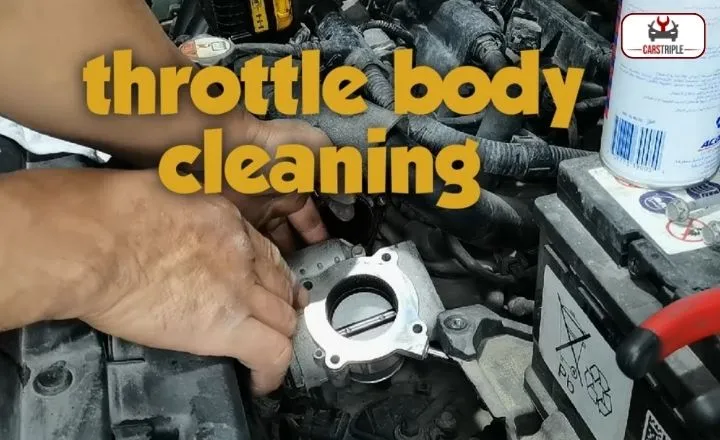
Conclusion
Understanding the Top 10 Symptoms Of A Bad Throttle Body is crucial for maintaining the optimal performance of your vehicle. Recognizing these signs early can help prevent further damage to the engine and save on costly repairs. Whether it’s experiencing rough idling, stalling, or a decrease in fuel efficiency, being aware of these symptoms can prompt timely action and ensure the safety and reliability of your vehicle.
Regular maintenance and inspections are essential to addressing any issues with the throttle body before they escalate. Don’t ignore these warning signs – take your vehicle to a trusted mechanic for a thorough check-up if you notice any of these symptoms.
FAQS
What are the common symptoms of a wrong throttle body?
Common symptoms include rough idling, stalling, and reduced acceleration.
Can a wrong throttle body cause engine misfires?
A lousy throttle body can cause engine misfires due to an incorrect air-fuel mixture.
Will a wrong throttle body affect fuel efficiency?
Yes, a wrong throttle body can lead to decreased fuel efficiency.

